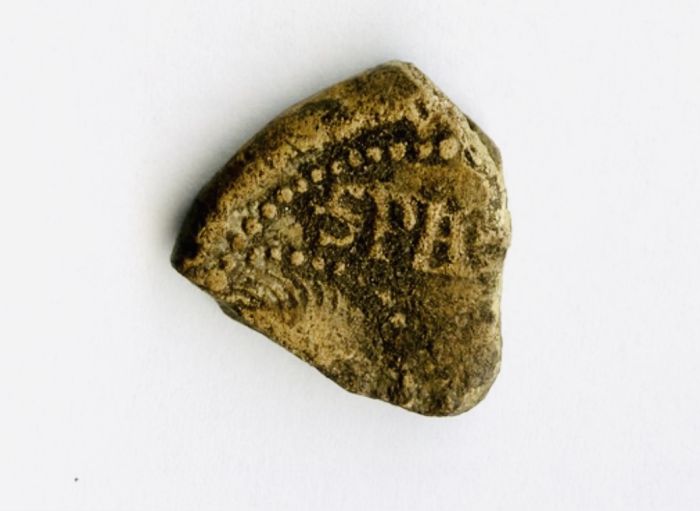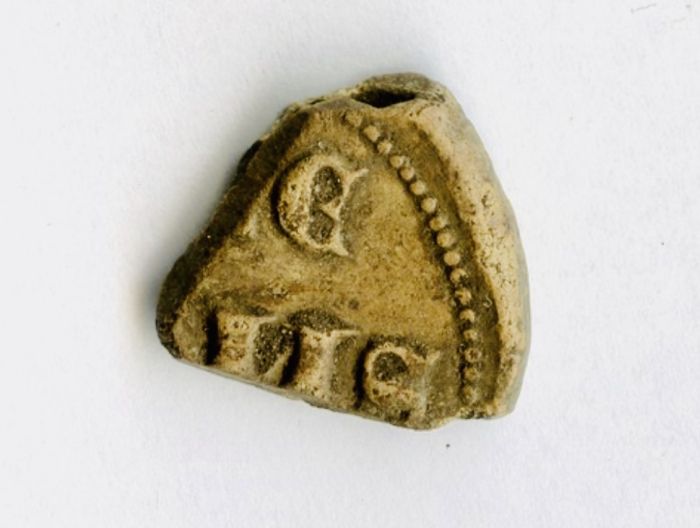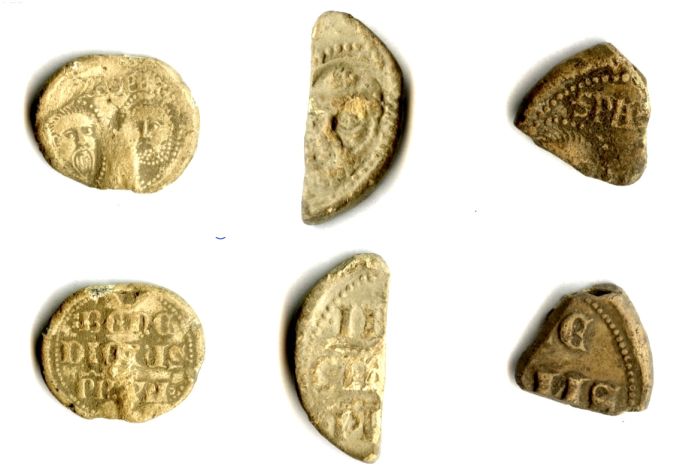
A fragment of a medieval leaden papal bull has been discovered near Wysoka Kamieńska (West Pomeranian Voivodeship).
According to the director of the Kamień Land History Museum, Grzegorz Kurka, this is the third bull that the museum has received in recent years, and the second one within a year.
The fragment was found by members of the Saint Cordula Exploration Association for the Saving of Monuments while searching an area near railway tracks.
President of the association, Jacek Ukowski told PAP: ‘We expected to find military items. The Germans' escape route to Wolin led through this area; we do not know how the bull ended up near this road. Maybe it was transported with soil from another area, for example during the construction of a new road surface, or perhaps it was lost.’
According to one hypothesis, the bull was destroyed on the way to the recipient and discarded at the edge of the road. The road is located eleven kilometres from Golczewo, where during the 14th century the bishops of Kamień (Schloss Gülzow) resided in a castle. The castle was in the possession of the bishops and the Kamień Chapter from 1304 (the end of the pontificate of Benedict XI).

As reported by the director of the Kamień Land History Museum Grzegorz Kurka, the obverse of the bull bears an uncial inscription: in the first line "...NE" and below "...US" (the pope's name is incomplete).
'Originally, below the name there was an abbreviation of the title PP (Pastor Pastorum) and a Roman numeral with the subsequent name of the pope. On this basis, i.e. the incomplete preserved inscription, it is difficult to attribute it to a specific bishop of Rome,’ Kurka said.
He added that the preserved letters and iconography could be attributed to the following popes: Benedict XI (1303-1304), Clement V (1305-1314), Benedict XII (1334-1342), Clement VI (1342-1352), i.e. the bull can be dated to the period between 1303 and 1352.

The bull is the third seal recently found in West Pomerania. The first lead bull seal from the time of the so-called the Avignon captivity of Pope Benedict XII (1334-1342) was discovered in 2020 in a field near Kamień Pomorski.
Another bull was discovered at the end of February 2023 during archaeological work at Wilków Morskich Street in Kamień Pomorski.
'Only a dozen or so monuments of this type have been discovered in Poland and they are considered unique. Mr. Jacek is the only person in Poland who managed to find papal bulls twice, within one year,’ Kurka said.

Papal bulls were also discovered in the Gdańsk Old Town, in the Kołbacz abbey, in Wawel in Kraków, in Ostrów Tumski in Poznań, in the Grodno castle, in Nowy Targ in Wrocław, in Grzybów near Kołobrzeg and in Mierzyn near Piotrków. (PAP)
PAP - Science in Poland, Małgorzata Miszczuk
misz/ bar/ kap/
tr. RL


